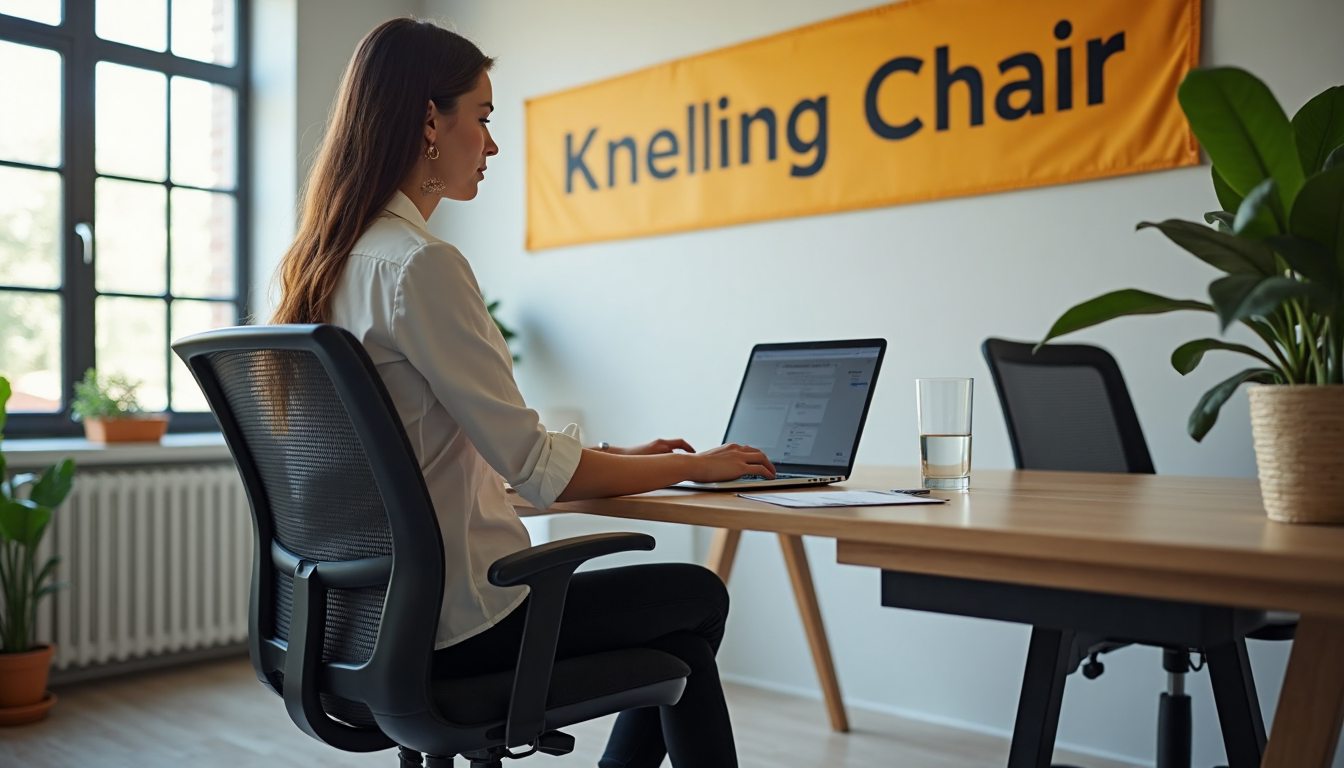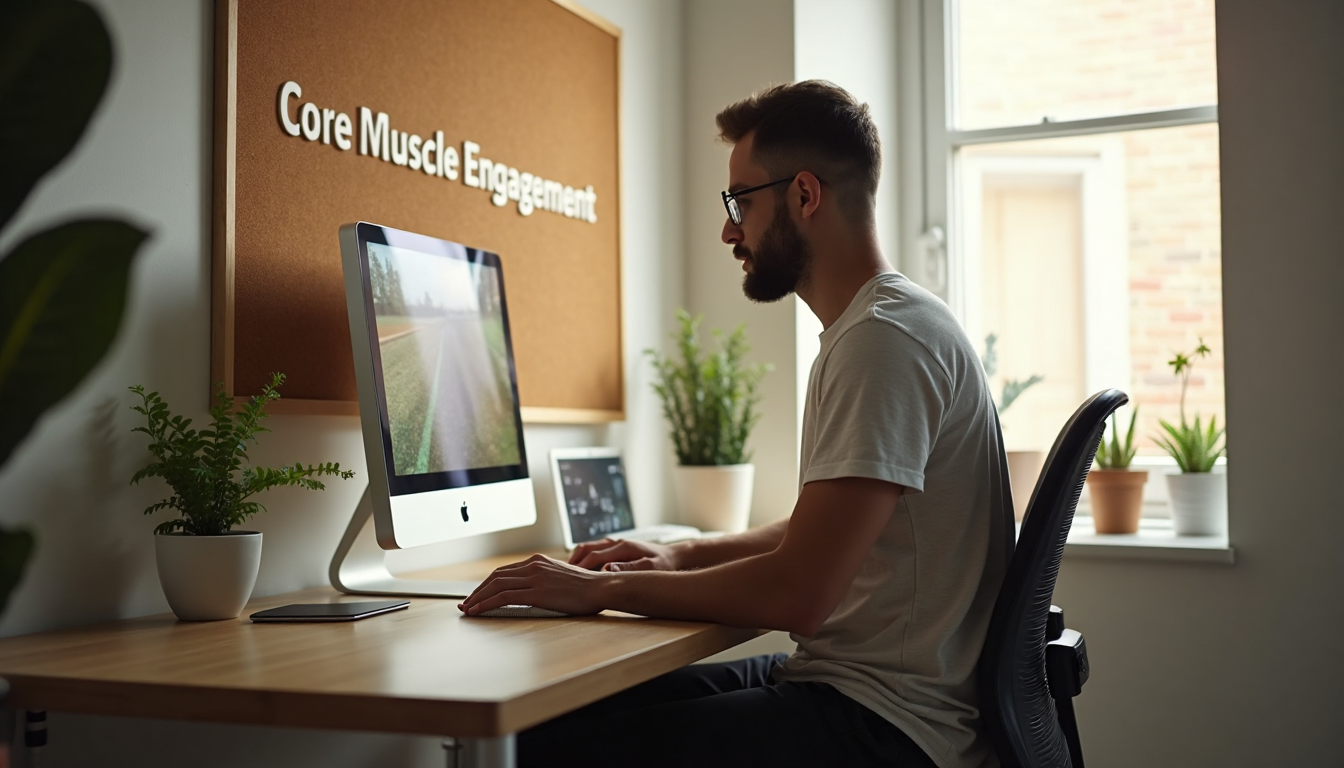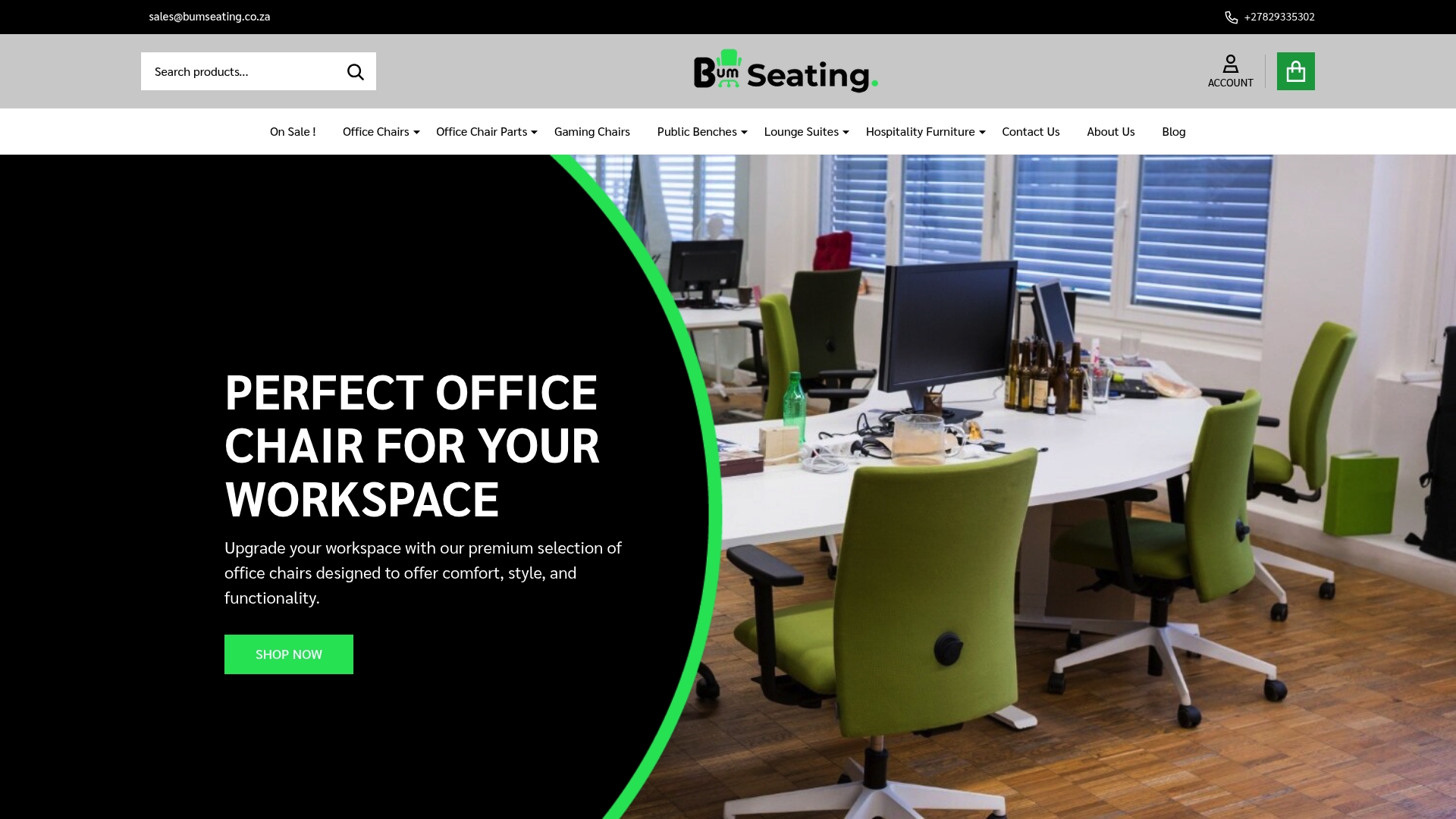What Is a Kneeling Chair? South Africa 2025 Buyer’s Guide
1st Jul 2025
What Is a Kneeling Chair? South Africa 2025 Buyer’s Guide

Kneeling chairs have taken office and home workspaces by surprise, offering a completely different posture solution that many South Africans are now considering. Most people think traditional chairs are the only way to sit, yet studies show kneeling chairs can improve spinal alignment and core muscle engagement compared to standard seating. Here is the twist. It usually takes just one to two weeks to adjust, and that small shift can mean a massive difference for your back and energy throughout the day.
Table of Contents
- Understanding What A Kneeling Chair Is
- Top Benefits For Office And Home Use
- Key Features To Consider Before Buying
- How To Use And Position A Kneeling Chair
Quick Summary
| Takeaway | Explanation |
|---|---|
| Kneeling chairs promote better posture | Their ergonomic design encourages a forward-leaning position that supports spinal alignment and reduces lower back pain compared to traditional chairs. |
| Adaptation is essential for comfort | Users typically require 1-2 weeks to adjust to using a kneeling chair; starting with short sessions and gradually increasing use is recommended. |
| Optimal use requires movement and breaks | Users should incorporate regular micro-movements and periodic standing breaks to benefit fully from the chair’s design and maintain overall physical wellness. |
| Individual physical needs matter | It’s important to assess personal comfort, body type, and existing physical conditions when selecting a kneeling chair for effective usage. |
| Integrate with other seating options | For best results, kneeling chairs should be alternated with traditional seating and combined with a holistic approach to workplace wellness, including stretching and movement. |
Understanding What a Kneeling Chair Is
A kneeling chair represents a revolutionary approach to seating design that challenges traditional office chair concepts by promoting a unique posture that supports spinal health and ergonomic comfort. Unlike conventional chairs that encourage 90-degree sitting positions, kneeling chairs fundamentally transform how we think about workplace seating.

The Ergonomic Design Philosophy
At its core, a kneeling chair is an innovative seating solution engineered to redistribute body weight and encourage a more natural, open body angle. Research from the Ergonomics Institute reveals that traditional chairs often force users into static, compressed postures that can lead to chronic back pain and muscular strain.
The distinctive design features a forward-sloping seat and padded shin supports that position the body at approximately 60 to 70 degrees from vertical. This unique configuration does more than just change how you sit - it actively promotes spinal alignment and engages core muscles. By shifting weight between the buttocks and lower legs, kneeling chairs help reduce pressure on the lower back and encourage a more dynamic sitting experience.
Biomechanical Benefits and Postural Advantages
Clinical studies published in the Journal of Physical Therapy Science demonstrate that kneeling chairs can significantly improve lumbar lordosis - the natural inward curve of the lower spine. This positioning helps counteract the detrimental effects of prolonged sitting, which has been linked to numerous health issues.
However, it’s crucial to understand that kneeling chairs are not a one-size-fits-all solution. Ergonomic experts at the Back Health Foundation recommend using these chairs as part of a broader strategy of movement and postural variation. They are most effective when alternated with traditional chairs and combined with regular standing breaks and stretching.
Key considerations for potential users include:
- Adaptation Period: Most individuals require 1-2 weeks to fully adjust to the unique sitting position.
- Physical Condition: People with existing knee or shin sensitivity might find these chairs challenging.
- Duration of Use: Recommended for shorter work sessions rather than continuous, all-day sitting.
While kneeling chairs offer remarkable ergonomic benefits, they represent a specialized seating solution that requires thoughtful implementation. They excel in environments that prioritize user health, dynamic movement, and proactive workplace wellness strategies.
Understanding what a kneeling chair is goes beyond its physical design - it represents a paradigm shift in how we conceptualize workplace comfort and bodily well-being. By challenging traditional seating norms, these chairs invite users to engage more actively with their physical workspace and prioritize long-term health over short-term convenience.
Top Benefits for Office and Home Use
Kneeling chairs transcend traditional seating solutions by offering a range of health and productivity benefits that make them increasingly attractive for both professional workspaces and home environments. These innovative chairs provide more than just a place to sit - they represent a proactive approach to personal well-being and ergonomic design.
Spinal Health and Posture Optimization
Research published in the Annals of Physical and Rehabilitation Medicine reveals compelling evidence about the significant postural advantages of kneeling chairs. The study demonstrates that these chairs facilitate a more natural spinal alignment, reducing trunk muscle activity and maintaining lumbar lordosis more effectively than traditional seating.
Unlike conventional chairs that encourage passive, compressed sitting positions, kneeling chairs actively promote dynamic posture. By distributing body weight between the buttocks and shins, they create an environment that supports the spine’s natural curvature. This biomechanical approach can potentially mitigate long-term risks associated with sedentary work environments, such as chronic lower back pain and muscular imbalances.
Core Muscle Engagement and Physical Wellness

Ergonomic experts from the International Ergonomics Association highlight that kneeling chairs do more than improve seating position - they transform sitting into an active, engaging experience. The unique design requires subtle, continuous core muscle activation to maintain balance and stability.
Key physical benefits include:
- Muscle Strengthening: Encourages continuous engagement of core and back muscles
- Improved Circulation: Reduces pressure points and promotes better blood flow
This continuous micro-movement can contribute to overall muscular health, potentially counteracting the negative effects of prolonged static sitting. Biomechanical studies suggest that such active sitting can burn more calories and maintain greater muscle tone compared to traditional chair designs.
Versatility in Work and Home Environments
Kneeling chairs are not confined to singular environments. Their adaptable design makes them ideal for diverse settings - from home offices and creative workspaces to study areas and collaborative zones. Design and Ergonomics Research indicates that these chairs are particularly beneficial for individuals who:
- Work in compact or flexible spaces
- Require frequent posture changes
- Experience chronic back or neck discomfort
- Seek alternative seating solutions
While they excel in professional settings, kneeling chairs have found significant traction in home environments. Creative professionals, remote workers, and individuals committed to proactive health management have increasingly embraced these innovative seating solutions.
It is important to note that kneeling chairs are not a universal solution. They work best when integrated into a holistic approach to workspace wellness, complemented by regular movement, stretching, and varied seating options. Individual comfort and physical condition play crucial roles in determining their effectiveness.
By reimagining seating as an active, health-promoting experience, kneeling chairs represent more than furniture - they embody a progressive approach to personal well-being in an increasingly sedentary world.
Key Features to Consider Before Buying
Purchasing a kneeling chair requires careful consideration of multiple factors beyond aesthetic appeal. Selecting the right chair involves understanding its ergonomic design, individual physical needs, and long-term comfort potential.
Structural Design and Ergonomic Configuration
Research from the Ergonomics Institute emphasizes that not all kneeling chairs are created equal. The fundamental structural elements determine the chair’s effectiveness in promoting proper posture and reducing physical strain.
Key structural considerations include:
- Seat Angle: Clinical studies recommend a forward seat inclination between 20 to 30 degrees to optimize spinal alignment
- Shin Pad Design: Cushioned support that distributes weight comfortably without causing excessive pressure
- Height Adjustability: Ensures compatibility with different body types and desk heights
Material Quality and Durability Factors
Workplace Ergonomics Research highlights that material selection directly impacts a kneeling chair’s performance and longevity. High-quality materials determine comfort, durability, and overall user experience.
Critical material considerations include:
- Cushioning: High-density foam that maintains shape and provides consistent support
- Frame Construction: Robust materials like steel or reinforced wood for stability
- Upholstery: Breathable fabrics that resist wear and facilitate temperature regulation
Personal Comfort and Physical Adaptation Requirements
Biomechanical experts recommend assessing individual physical conditions before investing in a kneeling chair. Not every design suits every user, making personalized evaluation crucial.
Important personal assessment factors include:
- Body Weight: Chairs have specific weight capacity limits
- Existing Physical Conditions: Knee or back issues might require specialized designs
- Intended Usage Duration: Some chairs perform better for short versus extended periods
Additionally, The Back Health Foundation suggests a gradual adaptation period. New users should initially use the chair for short intervals, gradually increasing duration as their body adjusts to the unique sitting position.
Beyond technical specifications, potential buyers should consider their workspace environment. A kneeling chair might work brilliantly in a home office but could be less practical in a traditional corporate setting with fixed workstations.
Ultimately, selecting a kneeling chair is a personal journey balancing ergonomic science, individual physiology, and workspace requirements. Thorough research, test sitting when possible, and understanding one’s specific needs are paramount in making an informed decision.
Remember that while kneeling chairs offer remarkable benefits, they are not a universal solution. They work best as part of a comprehensive approach to workplace wellness, complemented by regular movement, stretching, and varied seating options.
Here is a table summarising the key features and considerations to look for when buying a kneeling chair in South Africa, based only on the information in this article:
| Feature | Why It Matters | Details/Recommendations |
|---|---|---|
| Seat Angle | Promotes optimal spinal alignment | 20-30 degrees forward inclination |
| Shin Pad Design | Comfort/distributes weight | Cushioned support, reduces pressure |
| Height Adjustability | For different body types and desks | Ensures compatibility and ergonomics |
| Cushioning | Impacts comfort and durability | High-density foam recommended |
| Frame Construction | Ensures longevity and stability | Steel or reinforced wood |
| Upholstery | Comfort, breathability, wear-resistance | Breathable and durable fabrics |
| Weight Capacity | User safety | Check manufacturer’s limit |
| Physical Condition | Adapts to user needs | Consider knee/back issues |
| Usage Duration | Optimal use | Best for short, intermittent sessions |
How to Use and Position a Kneeling Chair
Mastering the art of using a kneeling chair requires more than simply sitting down. It demands a nuanced understanding of body mechanics, proper positioning, and gradual adaptation to an entirely different seating approach.
Initial Setup and Positioning Techniques
The Canadian Centre for Occupational Health and Safety recommends a careful approach to kneeling chair positioning. Unlike traditional chairs, these ergonomic solutions require specific adjustments to maximize comfort and effectiveness.
Key initial positioning steps include:
- Desk Height Alignment: Ensure your work surface allows comfortable arm positioning
- Chair Height Adjustment: Set shin pads and seat to support your body’s natural angle
- Weight Distribution: Aim for balanced weight between buttocks and shins
Gradual Adaptation and Usage Techniques
Ergonomic experts from the International Ergonomics Association emphasize that transitioning to a kneeling chair is not an overnight process. The body requires time to adapt to this novel sitting approach.
Recommended adaptation strategies:
- Start with Short Sessions: Begin with 15-30 minute intervals
- Alternate Seating: Use traditional chairs alongside the kneeling chair
- Listen to Your Body: Pay attention to any discomfort or strain
Movement and Posture Maintenance
Biomechanical research suggests that kneeling chairs are most effective when users maintain active, dynamic positioning. This means avoiding prolonged static sitting and incorporating subtle movements.
Optimal usage techniques include:
- Frequent Micro-Movements: Shift weight periodically
- Stretch Breaks: Take short standing breaks every 30-45 minutes
- Core Engagement: Maintain gentle core muscle activation
The Back Health Foundation warns that while kneeling chairs offer significant ergonomic benefits, they are not a permanent sitting solution. They work best as part of a broader strategy of movement and postural variation.
Understanding the nuanced mechanics of a kneeling chair goes beyond simple positioning. It requires a holistic approach to workplace ergonomics, personal physical awareness, and a commitment to proactive health management.
Users should remember that individual experiences vary. What works perfectly for one person might require adjustment for another. Patience, self-awareness, and willingness to make incremental changes are key to successfully integrating a kneeling chair into your daily routine.
Ultimately, a kneeling chair is not just a piece of furniture - it’s a tool for promoting better posture, reducing physical strain, and encouraging a more dynamic approach to workplace wellness.
To assist users in transitioning to a kneeling chair, here is a table that organises the gradual adaptation process and optimal usage steps highlighted by experts in the article:
| Step | Action | Purpose/Notes |
|---|---|---|
| 1 | Start with short sessions | Begin with 15-30 minute intervals |
| 2 | Alternate seating | Switch between kneeling and traditional chairs |
| 3 | Adjust for desk/chair height | Align for ergonomic comfort |
| 4 | Distribute weight evenly | Avoid excess pressure on shins or buttocks |
| 5 | Listen to your body | Adjust or pause if discomfort occurs |
| 6 | Incorporate micro-movements | Shift position, avoid sitting still too long |
| 7 | Take frequent stretch breaks | Stand every 30-45 minutes |
Frequently Asked Questions
What is a kneeling chair?
A kneeling chair is an ergonomic seating solution designed to promote better posture by redistributing body weight. It features a forward-sloping seat and shin supports that help improve spinal alignment and engage core muscles.
What are the benefits of using a kneeling chair?
Kneeling chairs can enhance spinal health, optimize posture, engage core muscles, and increase overall physical wellness. They are particularly useful in reducing lower back pain associated with traditional seating.
How do you adjust to a kneeling chair?
Most users need 1-2 weeks to adapt to a kneeling chair. It is recommended to start with short sessions of 15-30 minutes and gradually increase usage while alternating with traditional chairs to ease the transition.
What factors should be considered before buying a kneeling chair?
When purchasing a kneeling chair, consider the seat angle, shin pad design, height adjustability, material quality, and personal comfort. It’s essential to assess individual physical needs and intended usage duration for effective use.
Experience Real Ergonomic Relief from Office Discomfort
If you are struggling with persistent back pain or poor posture from hours in a traditional office chair, you are not alone. The article highlights the need for seating solutions that support spinal alignment, promote healthy movement, and adapt to the unique needs of South Africans working at home or in the office. You have learned about the advantages of active sitting and the importance of ergonomic adaptation. Now is your chance to transform your workspace with seating designed for both comfort and wellness.

Why wait for discomfort to worsen when you can take control of your well-being today? Explore our collection at Bum Seating to find expertly crafted office chairs, innovative kneeling chairs, and ergonomic seating options that fit your space and style. Each product listing provides clear images, detailed descriptions, and transparent pricing so you know exactly what you are getting. Act now to experience the benefits mentioned in the buyer’s guide. Discover how switching to a better chair can boost your comfort, enhance productivity, and support a healthier working lifestyle. Visit Bum Seating and upgrade your seating solution today.
